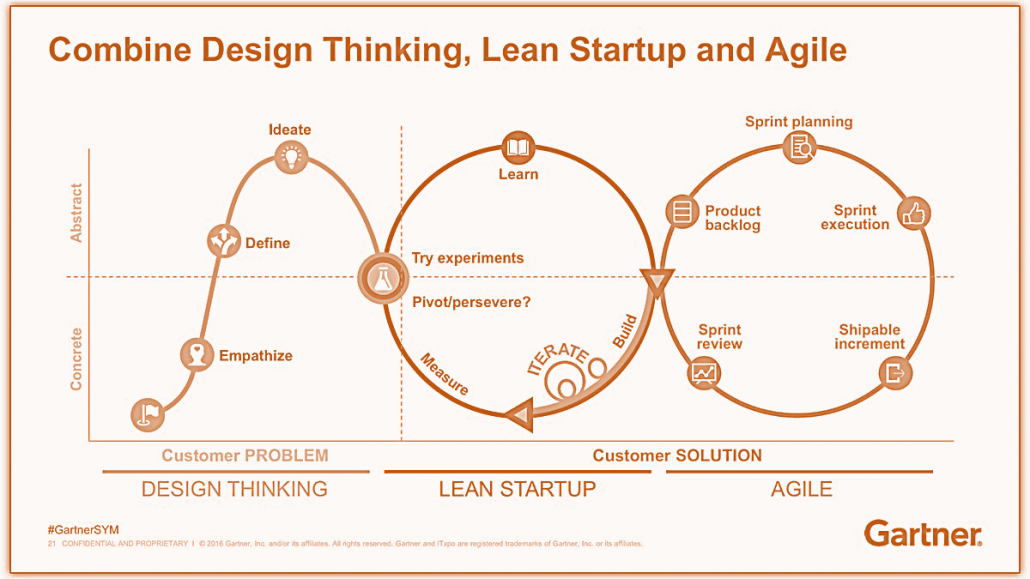Agile Customer Co-Creation: The customer as innovator
Together with my colleagues in the DDIM.fachgruppe Vertrieb & Marketing I will publish a book
It contains valuable articles from our practice as Interim Manager Sales & Marketing.
Here is my contribution to this book: “Agile Customer Co-Creation: The Customer as Innovator”
The pressure to innovate is increasing and innovation cycles are becoming shorter. Anyone who wants to stand out from the competition and successfully establish products on the market in today’s world must (even) pay more attention to the needs of the customer. An agile customer co-creation solves this problem and offers companies numerous advantages.
Interactive value creation for more success
“Focus on the customer and everything else will follow,” said Google founder Larry Page years ago. Today, this guiding principle is more relevant than ever – in times of “new work”, customers do not just want to consume. You want to be integrated into business models and actively or passively participate in shaping them! This is achieved with so-called customer co-creation: companies integrate customers (or suppliers, partners, stakeholders) into processes or use open platforms to generate ideas together. Whether in the concept, specification, design or development phase: with input from the customer, companies can solve customer needs and problems more efficiently, develop new innovations and disruptive concepts or improve existing products and services in a targeted manner. Even the emotional decision criteria can be better understood with a co-creation – valuable insights that companies can use for their agile sales process.
Companies improve their (end-to-end) customer experience (CX) with a co-creation. The customer feels valued, takes on a leadership function and enjoys an additional experience consumption in addition to the usual product consumption.
At the same time, companies improve their (end-to-end) customer experience (CX) with a co-creation. The customer feels valued, takes on a leadership function and enjoys an additional experience consumption in addition to the usual product consumption. This takes the customer relationship (and customer loyalty) to the next level and increases the emotional investment of customers. How strong the customer’s motivation is depends on the value that the customer can achieve through co-creation (see Gassmann: “Shaping Digital Transformation”).
In addition, many products are threatened by commodification – it is becoming increasingly difficult to stand out from the mass of competitors. A great customer experience and (digital) services will help you to differentiate your company from the competition. According to a study by Capgemini Consulting, 81% of customers are willing to pay for a better customer experience. Those who link their business operations to the customer experience are potentially more successful and generate higher margins. In contrast, one in five customers permanently turns away from the company after a bad customer experience – the so-called “peak-end rule” plays a significant role in this.
Important: co-creation does not only mean cooperation with external partners. It is at least as important to develop processes and products across functions and/or departments within the own company. This is achieved, for example, with multidisciplinary teams and the concept of Human-Centered Design Thinking, which also focuses on user wishes and needs. Many companies are already doing this – according to a study by PwC, 73% of the companies surveyed are developing their products across functions. Those who do not do so leave a lot of potential behind.
Advantages of an agile customer co-creation
- Using the customer’s innovative power, better understanding of customer needs
- Identify customer problems and develop tailor-made products
- Understanding emotional decision criteria and optimising sales processes
- Improve customer experience and highlight differentiators
- Strengthen customer loyalty and establish long-term customer relationships
- Accelerate time to market and increase chances of success
Sustainable competitiveness
What makes a customer co-creation particularly valuable? Companies increase their chances of success in bringing new products and services to market by minimising the risk of a lack of customer value. In fact, between 50% and 80% of all new products fail because the customer benefit is insufficient. For the same reason, 70% of newly introduced products are no longer on the shelves after 12 months. This is exactly where customer co-creation comes in, by letting customers participate in product development. Companies can test usage promises at an early stage, discover new needs and navigate more securely through the development process thanks to regular customer feedback. This avoids costly mistakes and ultimately leads to products that are tailored to the actual needs of the target group and users – another element of the Vertriebshygiene® concept I designed.
Time to market is reduced by up to 28 % through customer co-creation
In addition, a close focus on customer needs accelerates market launches – especially in traditionally cumbersome industries such as plant and mechanical engineering or insurance. According to a study by PwC, customer co-creation reduces the time to market by an average of 17%, and by as much as 28% for “digital champions”. Whether it’s brainstorming, testing prototypes, validating important assumptions or developing new business models: all this can be accelerated with co-creation without increasing the budget.
According to a study by Sopra Steria, 77% of companies now see the customer need for more individual products and services as a sustainable growth and sales opportunity. Although, according to this study, customer centricity is of high to very high relevance in 88% of the companies, it is clearly expandable in almost half of the companies. Companies improve their market position and achieve higher sales if they act in a customer-oriented manner and align processes and produced goods with the customer.
[Fig. 2: Assessment of companies’ own customer centricity (Source: Sopra Steria)]
Customer co-creation for B2C and B2B
Interactive value creation through co-creation makes sense in all industries. For example, the Swedish company IKEA encourages its customers to develop their own products with the digital platform “Ikea Co-Creation”. Coca-Cola used the concept of Customer Co-Creation to validate its Southeast Asian product strategy and LEGO developed 23 special and highly successful LEGO sets using the open source platform “LEGO Ideas”.
Customer co-creation is at least as important for B2B companies – because purchasing decisions of B2B and B2C customers are more similar than it first appears (consumerisation / industrial consumerism). In addition to objective criteria, subjective factors also play a role in B2B – for example, whether the brand fits the positioning of your own company or whether the product design and features are attractive (see Almquist “The Elements of B2B Value®“). It is therefore important to know all the rational and emotional factors that are decisive for customers when making a purchase decision. Forrester Research found that more than 55% of consumers today take corporate values into account in their purchasing decisions. Companies gain such insights with customer co-creation. Time and cost-intensive processes are not necessary for this.
B2B buyers spend only 17% of their time meeting with potential suppliers. Customer Co-Creation ensures that most of this time is spent on your business.
An Accenture survey showed a remarkable gap between the expectations of buyers and the customer-centricity of suppliers.
Purchasing departments are often no longer comfortable within the framework offered and turn their backs on companies that do not take intensive care of them, ignore their needs and offer inappropriate solutions and services. This is reflected in these dramatic figures:
– 62% of the companies surveyed have changed suppliers in the past year.
– 36% plan to change in the next 12 months. This means:
– 80% of customers will change supplier within 24 months.
A study by research and consulting firm Gartner also found that B2B buyers spend only 17% of their time meeting with potential suppliers. If buyers compare several suppliers, this figure is perhaps five to six percent per supplier.
With a Customer Co-Creation, companies can spend more of this short time directly with the customer to find out what the real needs are. In this way, these companies prevent migration, strengthen customer loyalty and significantly increase their sales quota. But the implementation is not always easy.
Companies prevent churn through customer co-creation, strengthen customer loyalty and significantly increase their sales quota.
Many challenges
A customer co-creation presents companies with a wide range of challenges. Companies often have to adapt the processes involved in new product development in particular – for example, when old tasks are eliminated or new tasks such as selecting and integrating customer suggestions into the innovation process are added. A catalogue of measures can help here – and define which co-creation makes sense for which innovation tasks. At the same time, new processes mean major changes for employees in the innovation area. For example, a customer co-creation increases the interaction tasks with the customer or can limit the competence areas of the employees. It is therefore often necessary to convince the management.

Source: Gartner
Transparency towards customers is at least as important. The customer must know at all times what the status quo of his participation is and what benefits he can bring to the company. If this is not the case, the customer does not feel valued. Frustration sets in, which can spread quickly – in the worst case, a social media shitstorm threatens. Transparency is also important in other areas: for co-creation, companies often have to rethink the protection of their intellectual property: while companies have to disclose certain innovation issues for customer interaction, of course not the entire knowledge base should be communicated to the outside world. The right balance between openness and protection is crucial.
At a glance
• A customer co-creation allows the customer to actively or passively participate in the innovation process of a company.
• Both B2B and B2C companies benefit from customer co-creation, because subjective factors influence the purchase decision everywhere.
• A co-creation provides valuable insights that companies can use for better customer experiences and sustainable competitive advantages.
Conclusion
An agile customer co-creation offers companies many advantages. For example, you can discover new market opportunities, steer product branding in the right direction, understand your customers better – and stand out from the competition with products tailored to the target group. All this leads to more customer satisfaction, a higher customer lifetime value and more revenue potential. Can you afford to do without it?
Talk to me.





